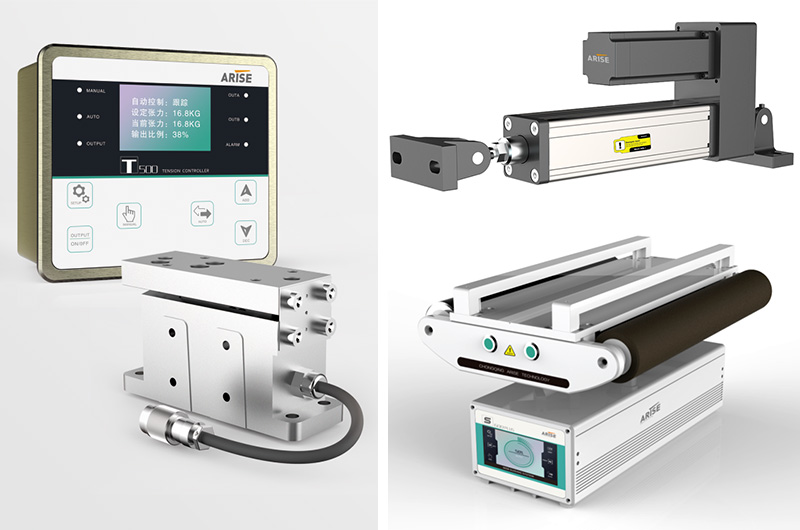What Is An EPC Web Guiding System
EPC is an abbreviation for edge position control. During the high-speed transmission process, the EPC web guiding system is used to manipulate and correct the direction deviation of the coil raw material. It performs real-time testing, active tracking, and active correction.

What Causes Acceleration Offsets In The Process Of The Edge Position Control
One of the most troublesome edge position deviations is known as the acceleration offset. When the machine speed is increased or decreased, the web moves sideways. The rate of movement is usually greatest at the top and bottom of the speed difference rather than on the speed ramp itself. Unfortunately, the term “acceleration offset” misrepresents the true nature of the edge movement. Indeed, the web has no idea how fast it is moving.
The various web tracks through a machine shown in Figure 6 illustrate the cause of most acceleration offsets. We demonstrate how the web moves through a machine with one of the rollers misaligned. When there is absolute traction, the web will follow the Normal Entry law on all rollers, including the misaligned one. Take note of how the web shifts as a result of this misalignment. However, in the case of pure flotation, the web is not steered by the ‘roller’ and thus passes directly through the machine. The case of sliding is intermediate in that there is a small offsetting of the web.
As a result, every roller or element that touches the web also steers it. The path of the web, on the other hand, will remain constant if the roller is stationary and the state of traction is constant. That is not to say it is straightforward. The web will obviously snake through the machine in accordance with web handling laws. What we mean is that the path will, for the most part, remain consistent.
However, if the web switches from full to partial tracking, the web’s path will shift slightly in response. This shift in traction will be subtle and difficult to detect using traditional observations and measurements. Nonetheless, it will move the web in response.
Why Choose EPC Web Guiding System For Edge Position Control
The EPC web guiding system provides edge alignment to avoid deviation of the waterproof coiled material during the entire production and processing process, as well as ensuring accurate and stable performance of the waterproof coiled material during the entire production process with the neatly divided rewinding machine.
The control board can choose the method of tracking the edge or line based on the various raw materials and choose the electric eye test to take into account the requirements of various raw materials.
How Does The EPC Web Guiding System Work
A sensor, an actuator, and a controller comprise a web guide system. Any detector that can reliably detect the edges of a web can be used as the sensor. Pneumatic (nonporous webs), photoelectric (opaque webs), and paddies are the most common (thick webs). Through the edge sensor, the web must be flat (no curl) and stable (no flutter). The sensor is frequently placed near a roller for this and other reasons. The web could be guided to the front edge, back edge, or center if two sensors are used.
The sensor’s output is routed to a controller, which sends a movement command to the actuator. If the controller’s gain is too low, the guide’s response will be sluggish and slow to correct. If the controller’s gain is too high, the guide will be hot but overshoot, and may even be unstable. For smaller assemblies, the actuator may be a stepper motor and ball-screw, while for larger assemblies, it may be a hydraulic cylinder. For responsive operation, the actuator and framework must be stiff.

Professional EPC Web Guiding System Provider- Arise
Arise is a leading EPC web guide system manufacturer in China. High-accurate Arise web guiding can ensure continuous, precise control of various coil materials in various manufacturing processes, ensuring that the material does not deviate from the correct position and minimizing waste and downtime.


